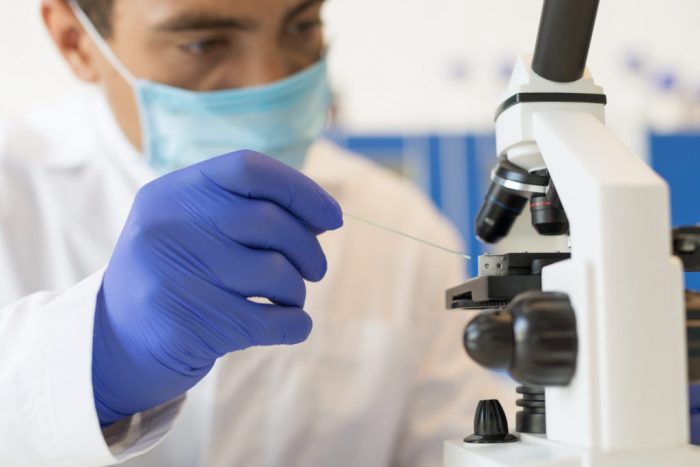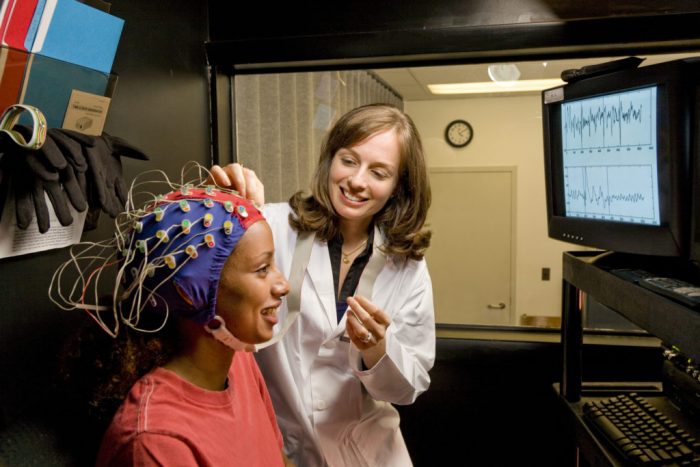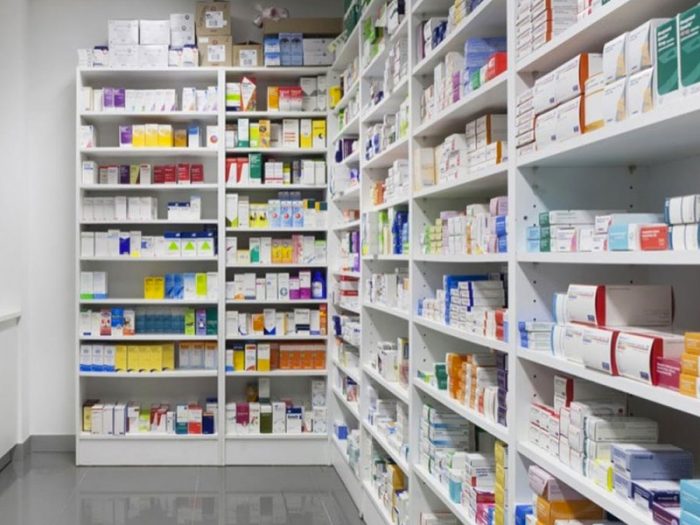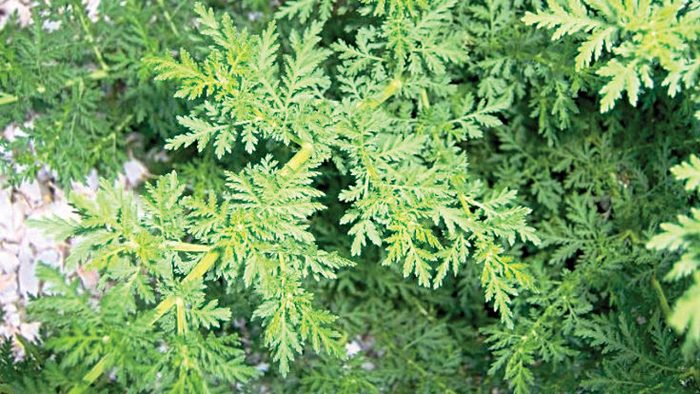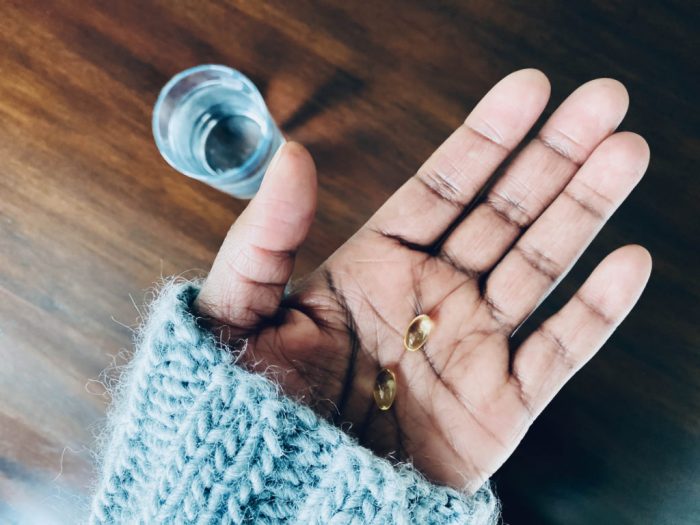More evidence are emerging on why death and infections by the novel coronavirus (COVID-19) will continue to be low in Africa and indeed Nigeria. In fact, researchers have demonstrated that a combination of several natural products and herbs such as black seed, Artemisia annua, aspirin, vitamin D3, zinc, honey, cloves, salt water and charcoal could be used to prevent and treat COVID-19.
According to a study published in the journal, The Nigerian Medical Practitioner, contrary to the projections of the World Health Organisation (WHO) and Western countries, Africa will not be devastated by COVID-19.
The study is titled, “Death and Infections by Coronavirus (SARS CoV2) Will Continue to be Low in Africa.” The researchers from the Department of Pharmacology, University of Maiduguri, Borno State, said the testing levels in Africa are far below those in Europe and United States, which may be responsible for the low incidences. They, however, said the percentage fatality rates are maintained between 1.3 per cent, even after three months of the pandemic. In Nigeria, the fatality rate was highest (3.57 per cent) on May 2, 2020 and is now below 2.9 per cent after three months (March to May).
The leader of the team of researchers, Prof. Isa Marte Hussaini gave reasons for the low COVID-19 incidence and fatality in Africa. Hussaini, a professor of pharmacology and fellow of the Nigerian Academy of Science (NAS), said: “The African population is very young based on our lower average life expectancy (61 years for males and 65 for females) compared with Asia, Europe or North America. In West Africa, it is 56 years (2019). The ages below these average of life expectancy have relatively good immune systems and low numbers of patients with co-morbidities such as diabetes mellitus, asthma and heart diseases compared with those over 70 years.
“Africans have more Vitamin D3 than Caucasians and Asians because of abundance of sunlight in the continent. Vitamin D3 is an immune booster, which protects Africans from coronavirus disease.
“In Africa, the frequency of exposures to bacteria and viruses is very high because of the poor hygiene conditions. This may lead to a generation of specific antibodies (IgG) in Africans to different diseases including coronaviruses (SARS CoV-1&2) which may make the African immune system much stronger than that of a Caucasian or Asian….”
Hussaini specialised in cancer research and is currently exploring the use of local herbs for cancer therapy. His report to the Nigerian Academy of Science on the use of local herbs for Cancer therapy suggested that herbal plants are more efficacious than the current drugs used in cancer treatments.
Hussaini said his team has successfully used some combination of local herbs to prevent and treat COVID-19 patients. “Some of the patients tested positive and were in isolation centre when the preparations were given to them. The quarantined patients were all discharged and did not develop any symptoms of COVID-19. The prophylactic use of the preparations was also successful,” he said.
Black seed oil, vitamin D3, aspirin, zinc
Hussaini said the dosage and usage are:
*Black Caraway/Black seed (Nigella sativa) Seed oil one teaspoonful three times daily (immunity booster, anti inflammatory, anti histaminic, anti bacterial and anti viral activities). We have determined the safety level of black seed oil at this dose level and is very safe
*Vitamin D3 1000 IU daily (immune booster, anti inflammatory and prevents cloth formation).
*Aspirin 75 (UK brand) or 81 (US brand) mg daily (prevents clot formation). Aspirin at this dose level selectively blocks the formation of thromboxane A2 in platelets without affecting the production of prostacyclin by the endothelium.”
He said this selective inhibitory property of low dose aspirin prevents platelets from aggregation and sticking together to form thrombus, which is recently found in COVID-19 patients.
Hussaini said the three preparations were given for 10- 14 days for treatment of COVID-19. “On a personal note, I have been taking Vitamin D3, aspirin 81mg for the past 10 years to boost my immune system and prevent thrombus formation,” he said.
The pharmacologist said the study involved both prevention and treatment with a sample size of 30 persons. “There is need to increase the sample size. It is now up to the Ministry of Health and the National Agency for Food and Drug Administration and Control (NAFDAC) to finance and carry out multi-centre clinical trials involving thousands of COVID-19 patients for this treatment regimen,” he said.
Also, researchers led by Mohammad Tariqur Rahman of the Faculty of Dentistry, University of Malaya, Kuala Lumpur, Malayasia, have found that a combination of black seed and zinc supplementation could be used to prevent and treat COVID-19.
The study titled “Potential Benefits of Combination of Nigella sativa and Zn Supplements to Treat COVID-19” was published in Journal Pre-proof.The researchers wrote: “…In line with the proposed use of chloroquine, Nigella sativa (black seed) could be considered as a natural substitute that contains a number of bioactive components such as thymoquinone, dithymoquinone, thymohydroquinone, and nigellimine. Further benefits to use N. sativa could be augmented by zinc supplement. Notably, Zn has been proven to improve innate and adaptive immunity in the course of any infection, be it by pathogenic virus or bacteria.
“The effectiveness of the zinc salt supplement could also be enhanced with N. sativa as its major bioactive component might work as ionophore to allow zinc salt/ions (Zn2+) to enter pneumocytes -the target cell for SARSCoV-2. Given those benefits, this review paper describes how Nigella sativa in combination with Zn could be useful as a complement to COVID-19 treatment.”
SARSCoV2 (Severe Acute Respiratory Syndrome Coronavirus type 2) is also known as COVID-19.
Artemisia annua and coffee
Also, a derivative of the Artemisia annua plant, also known as sweet wormwood, has long been used in the treatment of malaria. Scientists are currently testing the plant’s potential against the novel coronavirus Sars-CoV-2.
Researchers at Germany’s Max Planck Institute of Colloids and Interfaces in Potsdam have been working with researchers from Berlin’s Free University and other institutions for weeks, testing whether Artemisia annua plant extract and its artemisinin derivatives, could eventually be used to fight the novel coronavirus.
“We extracted pure substances from the Artemisia plant and combined it with the virus,” explained Peter Seeberger from the Max Planck Institute, who is co-head of the study along with the chemist Kerry Gilmore. The study is yet to be peer-reviewed.
“Since I work with combinations of Artemisia plants, I am very familiar with the interesting activities of plants that can work against different diseases, including a whole series of viruses,” said Seeberger.
He said that’s why it made sense to him and his colleagues to look into the possible effects on SARS-CoV-2. The plants used in the study were cultivated in the US state of Kentucky.
Researchers found that the leaves of Artemisia extract showed anti-viral activity after being extracted with pure ethanol or distilled water. The anti-viral activity increased considerably when the ethanol extract was combined with coffee.
“I was surprised that Artemisia extracts worked much better as a derivative, and that adding coffee increased the anti-viral activity,” said Klaus Osterrieder, professor of virology at the Free University.
In April, Madagascar’s President Andry Rajoelina promoted an unproven herbal concoction made from the Artemisia annua plant produced in the country called Covid-Organics.
There have been no clinical trials of the remedy, however.The World Health Organization “urges extreme caution over reports touting the efficacy of such products.” The WHO also warns that there is “no evidence to suggest that COVID-19 can be prevented or treated with products made from Artemisia-based plant material.”
“In recent weeks we have been asked over and over again to say something about Covid Organics. We have tried to get hold of some,” said Seeberger. “Unfortunately, we weren’t able to get hold of any samples. I think it’s a real shame. If it really works, it would be great to be able to test it. As far as we know, there have not been any scientific studies so far.”
The University of Kentucky is set to start clinical studies into the effects of Artemisia annua combined with coffee and tea. The effectiveness of artesunate, another derivative of the plant that is used to treat malaria, will also be tested.
Black seed, chamomile, cloves and honey
Also, another study published in American Journal of Public Health Research and titled “The Evidence-Based TaibUVID Nutritional Treatment for Minimizing COVID-19 Fatalities and Morbidity and eradicating COVID-19 pandemic: A novel Approach for Better Outcomes (A Treatment Protocol)” noted: “…In addition, nigella sativa enhances immunity, exerts tissue protective effects and effectively treats co-morbidities. Oral honey exerts potent antiviral effects, enhances immunity and exerts tissue protective effects. TaibUVID Plus dose includes regular TaibUVID dose plus nigella sativa decoction nebulization ± (if possible Clove oil nebulization/ Anthemis hyalina decoction nebulisation).
Clove oil nebulisation is beneficial for difficult berating in some COVID-19 cases as clove is confirmed to exert potent antiviral effects.
“The wonderful report by Ulasli et al. deserves a lot of interest where nigella sativa and Anthemis hyalina (chamomile) were confirmed to inhibit corona virus replication maximally. In addition, Nigella sativa enhances immunity, exerts tissue protective effects and effectively treats co-morbidities. Oral honey exerts potent antiviral effects, enhances immunity and exerts tissue protective effects. TaibUVID Plus dose includes regular TaibUVID dose plus nigella sativa decoction nebulization ± (if possible Clove oil nebulization/ Anthemis hyalina decoction nebulization). Clove oil nebulization is beneficial for difficult berating in some COVID-19 cases as clove is confirmed to exert potent antiviral effects.
“Our suggested TaibUVID and TaibUVID Plus are promising evidence-based approach to rescue lives, decrease fatalities and put a rapid end to COVID-19 pandemic. In prophetic medicine, Prophet Muhammad peace be upon him recommended treatment using both nigella sativa and oral honey saying: “ In the black cumin (nigella sativa), there is a cure for every disease except death” and said also: “Cure is in three: in shartat mihjam, gulp of honey (oral honey), and cauterization. I do not recommend my nation to cauterize”.
TaibUVID stands for Taibah University anti-COVID-19 treatment as a novel evidence-based approach (using natural products) for treating COVID-19 patients. A single TaibUVID dose includes: one small spoonful (tea spoonful) of nigella sativa oil (or two gramme Nigella sativa seeds) mixed with one gramme of grinded Anthemis hyalina mixed with one large spoonful of natural honey. This mixture is to be chewed in the mouth and swallowed orally for both COVID-19 contacts and patients.
Charcoal
Also, artificial enzymes made of treated charcoal could have the power to curtail damaging levels of superoxides, radical oxygen ions that are toxic at high concentrations.
The nanozymes developed by a Texas Medical Centre, United States, team are highly effective antioxidants that break down damaging reactive oxygen species (ROS)/free radicals produced in abundance in response to an injury or stroke.
The researchers suggested the materials, described in the American Chemical Society journal ACS Applied Nano Materials, could aid treatment of COVID-19 patients.
The biocompatible, highly soluble charcoal is a superoxide dismutase, and was synthesized and tested by scientists at Rice University, the University of Texas Health Science Center’s McGovern Medical School and the Texas A&M Health Science Centre.
Superoxide dismutases, or SODs, dismantle ROS into ordinary molecular oxygen and hydrogen peroxide. In the project co-led by Rice chemist James Tour, previous materials were successfully tested for their ability to activate the process, including graphene quantum dots drawn from coal and polyethylene glycol-hydrophilic carbon clusters made from carbon nanotubes.
They have now found oxidized charcoal nanoparticles are not only effective antioxidizers, but can also be made from an activated carbon source that is inexpensive, good manufacturing practice (GMP)-certified and already being used in humans to treat acute poisoning.
“That these nanozymes are made from a GMP source opens the door for drug manufacturers,” said Tour, who led the project with A&M neurologist Thomas Kent and UTHealth biochemist Ah-Lim Tsai. “While coal was effective, an issue is that it can have a variety of toxic metallic elements and impurities that are not consistent across samples. And the clusters made from carbon nanotubes are very expensive.”
The disc-like nanozymes are prepared from powdered, medical-grade charcoal oxidized by treatment with highly concentrated nitric acid. The nanozymes teem with oxygen-containing functional groups that bust up superoxides in solution.
Tour noted the nanozymes are able to pass through the membranes of cells’ mitochondria to quench a major source of free radicals without killing the cells themselves. “We published a paper on this recently,” he said. “This seems to be really important to why these work so well in traumatic brain injury and stroke.”
The researchers noted it might be worthwhile to study the application of their nanozymes to treat the cytokine storms — an excessive immune system response to infection — suspected of contributing to tissue and organ damage in COVID-19 patients.
“While speculative that these particles will be helpful in COVID-19, if administration is timed correctly, they could reduce the damaging radicals that accompany the cytokine storm and could be further chemically modified to reduce other injury-causing features of this disease,” Kent said.
Salt water
Also, salt water could treat COVID-19, according to scientists who will test whether the unusual remedy actually works. Gargling salt water has been found to reduce the symptoms of coughs and colds and to stop them getting worse, researchers say. And now they want to find out if it could help people with mild symptoms of the coronavirus, which infects the airways in a similar manner.
University of Edinburgh experts are recruiting people to take part in a study to test whether gargling with salt water could boost the body’s antiviral abilities. Knowing how to treat COVID-19 is still a grey area for doctors, with people with mild symptoms advised to stick to paracetamol and ibuprofen.
Two antivirals have been approved for British National Health Service (NHS) use on critically ill patients, the steroid dexamethasone, and an anti-Ebola drug remdesivir — but neither are silver bullets.
The Edinburgh scientists now want to find out if the low-cost salt-water option could help people with mild infections and also stop them getting more seriously ill.
The idea for the study came from ongoing research into upper respiratory infections — which commonly cause coughs and colds. People with those illnesses were found to benefit from gargling regularly with salt water in a trial dubbed ELVIS (Edinburgh and Lothians Viral Intervention Study).
Results from the ELVIS trial, published last year, found people who gargled saline had less severe coughs, less congestion and colds that lasted two days less, on average.
They were also less likely to pass on the cold to family members, or to resort to taking medicines from a pharmacy, compared to people who did not gargle.
The Edinburgh team, whose original study included a different type of coronavirus, thinks the salt water could boost the body’s natural virus-fighting mechanisms, which are triggered when they get ill.
They suggested direct contact with salt has a toxic effect on the viruses themselves, or stimulates ‘innate immune mechanisms’ inside cells in the airways.
The body’s cells to create a chemical called hypochlorous acid, which is found in bleach and known to kill viruses, the researchers said, may also use salt.
Director of Edinburgh University’s Usher Institute, Prof. Aziz Sheikh, said: “We are now moving to trial our salt water intervention in those with suspected or confirmed COVID-19, and hope it will prove to be a useful measure to reduce the impact and spread of the infection.”
How could gargling salt water treat the coronavirus? Researchers at Edinburgh University trialled saltwater gargling and ‘nasal irrigation’ in a trial on people with upper respiratory tract infections, otherwise known as coughs and colds, and found it reduced their symptoms and the length of their illness.
Their study, published in the journal Scientific Reports last year, found 93 per cent of people said gargling reduced their symptoms, their illnesses lasted two days less, on average, and they were 35 per cent less likely to pass it on to a family member.
Scientists hope the cheap, simple therapy could have similar benefits for people with the coronavirus, reducing the severity of their cough and preventing the illness from worsening.
Explaining how the salt could achieve this effect, the study said direct contact with salt might have a toxic effect on the viruses themselves and damage or kill them.
It may also stimulate ‘innate immune mechanisms’ inside cells in the airways, they suggested, effectively boosting the body’s own ability to fight off infection.
Salt may also be soaked up and used by the body’s cells to create a chemical called hypochlorous acid, which is found in bleach and known to kill viruses, the researchers said.
“It only requires salt, water and some understanding of [gargling] procedure, so should, if found to be effective, be easy – and inexpensive – to implement widely.”
The study is open only to adults living in Scotland who have symptoms of COVID-19 or have recently received a positive test for the virus.It is expected to operate similarly to the previous one in which some participants will gargle salt water while others down, with all of them following the same lockdown rules. In the cough and cold study people kept diaries of their symptoms for two weeks and reported back to the scientists, who compared which group fared best.

